Last Updated on May 10, 2021
Today, I want to show you how to build a Joel Salatin style chicken tractor. Joel Salatin has almost perfected the art of pastured poultry so his model is a good one to start with. In the following article I want to show you the steps I used to build my chicken tractor. Although it’s not an exact copy of Joel’s, it was inspired by his and is built in a similar fashion.
When you buy through links on our site, we may earn an affiliate commission. As an Amazon Associate I earn from qualifying purchases.
Introduction to How to Build a Joel Salatin Style Chicken Tractor
A chicken tractor is a portable chicken coop that allows them to forage in a new spot every day, protects them from predators, and allows them to fertilize the ground as they are moved around.
The specific chicken tractor I’m going to show you how to build is for broilers or meat chickens and is built in a similar style to the Joel Salatin chicken tractors if you know what those look like. It’s one of the best ways to raise chickens on pasture. Here’s how I built mine.
Step 1: How to Build the Frame
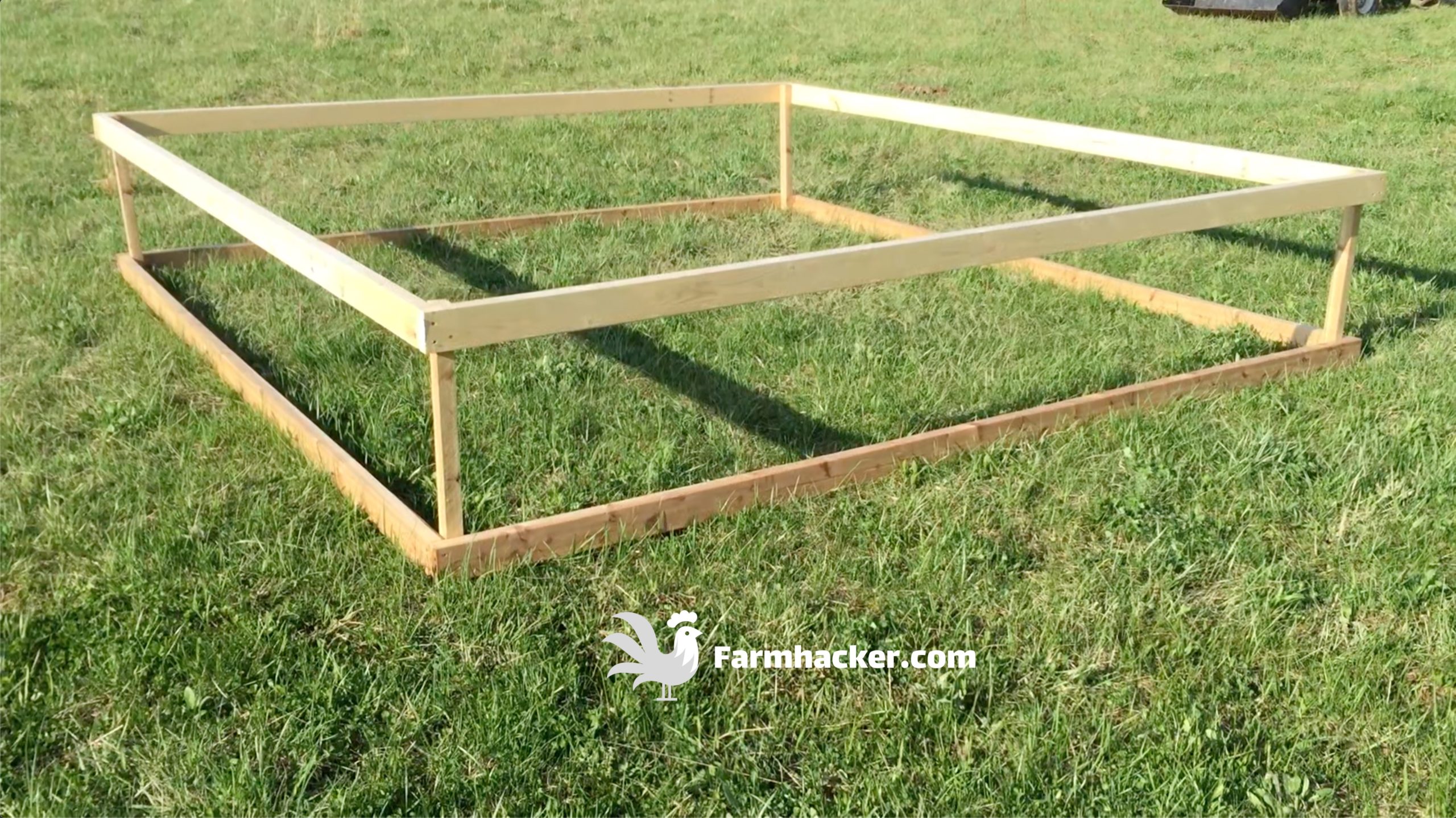
What I did here was I took eight two-by-fours that are ten feet long each and I created this box. I put the two-by-fours up on their sides, I screwed them together, and then I took two-by-twos and I put them in each corner.
Note: I highly recommend using this type of torx screw when assembling your chicken tractor (or anything on your farm for that matter). They work much better than phillips screws because they aren’t prone to stripping and hardly ever slip out of the torx bit.
The two-by-twos they were actually two-by-fours that I ripped down the center because the hardware store didn’t have any cedar two-by-twos. The reason I use cedar is because cedar has a natural rot resistance and we try to stay away from any type of pressure treated lumber here on the farm if we can, especially when we’re dealing with housing animals.
I used the cedar on the bottom and in the corners. The top is pine because it’s gonna stay off the ground and it should be okay that way. This will obviously not last as long as pressure-treated lumber would but I’m okay with that.
Next, I’m going to show you how to make it more sturdy. I’m going to wrap it in chicken wire, put a roof and some sides on it, and then I’m gonna put a door on one of the corners. This will allow me to get the chickens in and out and take care of them, feed them, water them, and everything else that I need to do with them.
Step 2: How to Install the Bracing
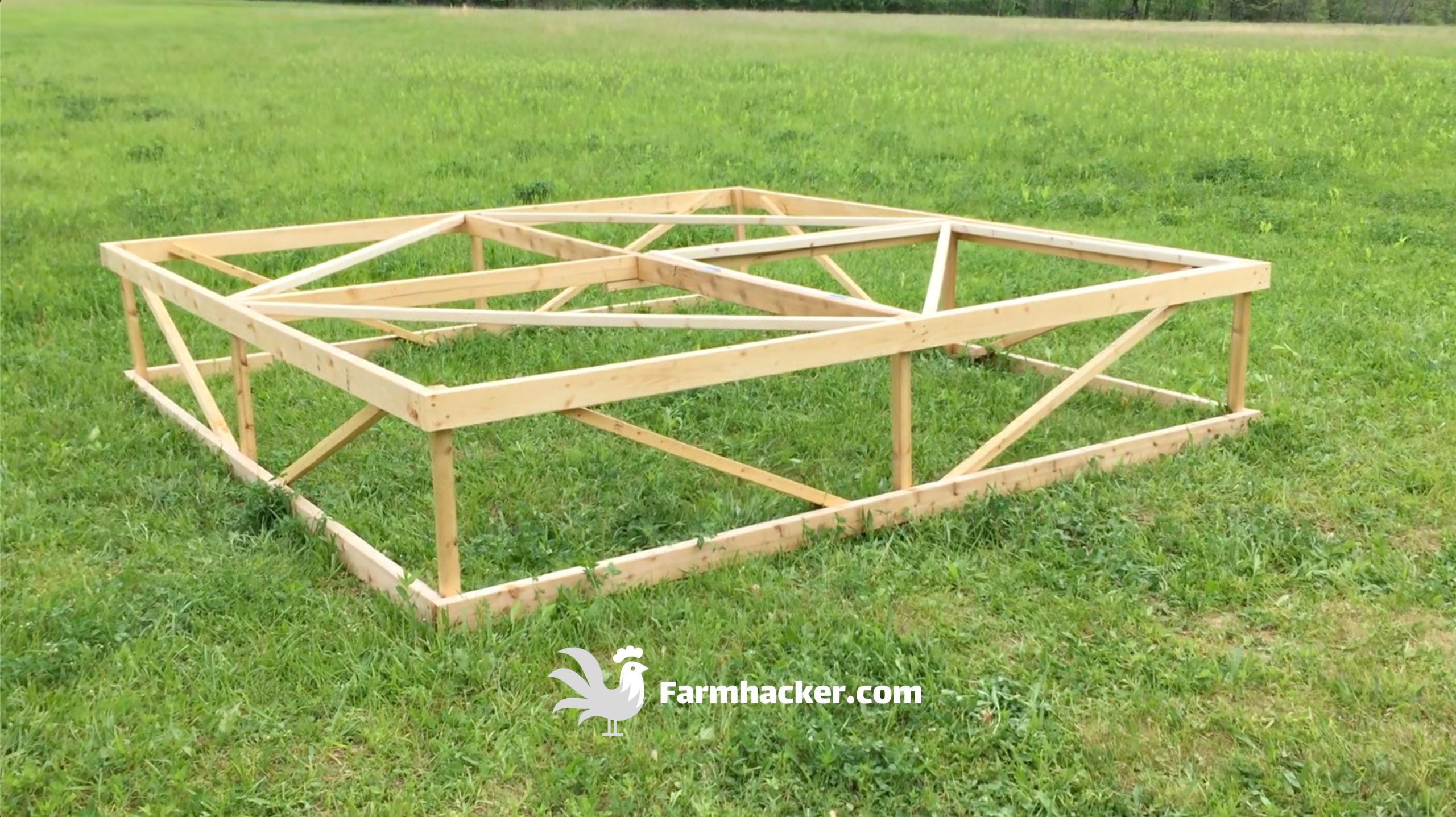
This is what all your bracing will look like when we get done with the following steps.
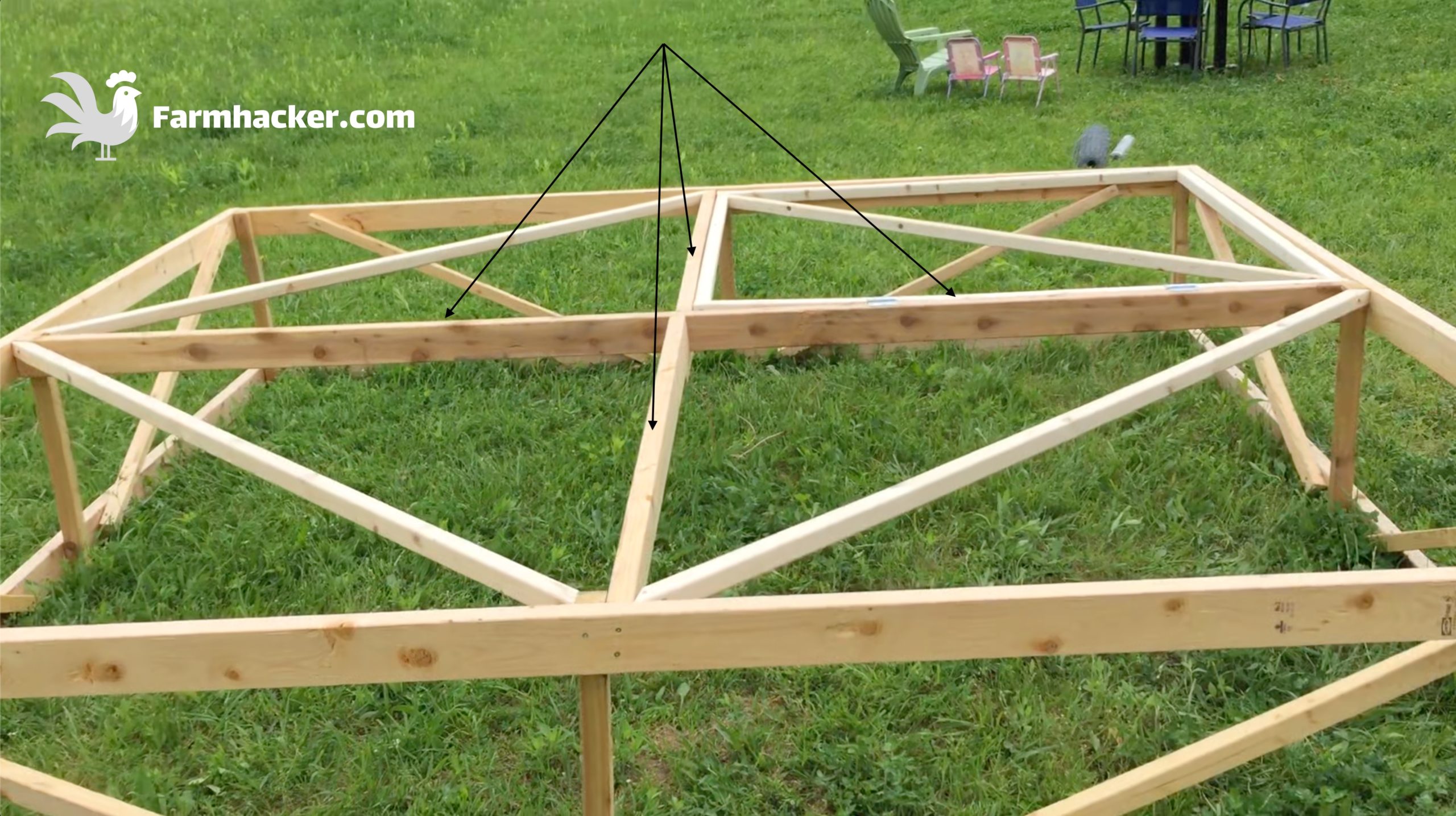
What I did here was I took two-by-fours and I created beams that form a cross right across the middle. I had to cut one of them and then I toenailed it in to the other one.
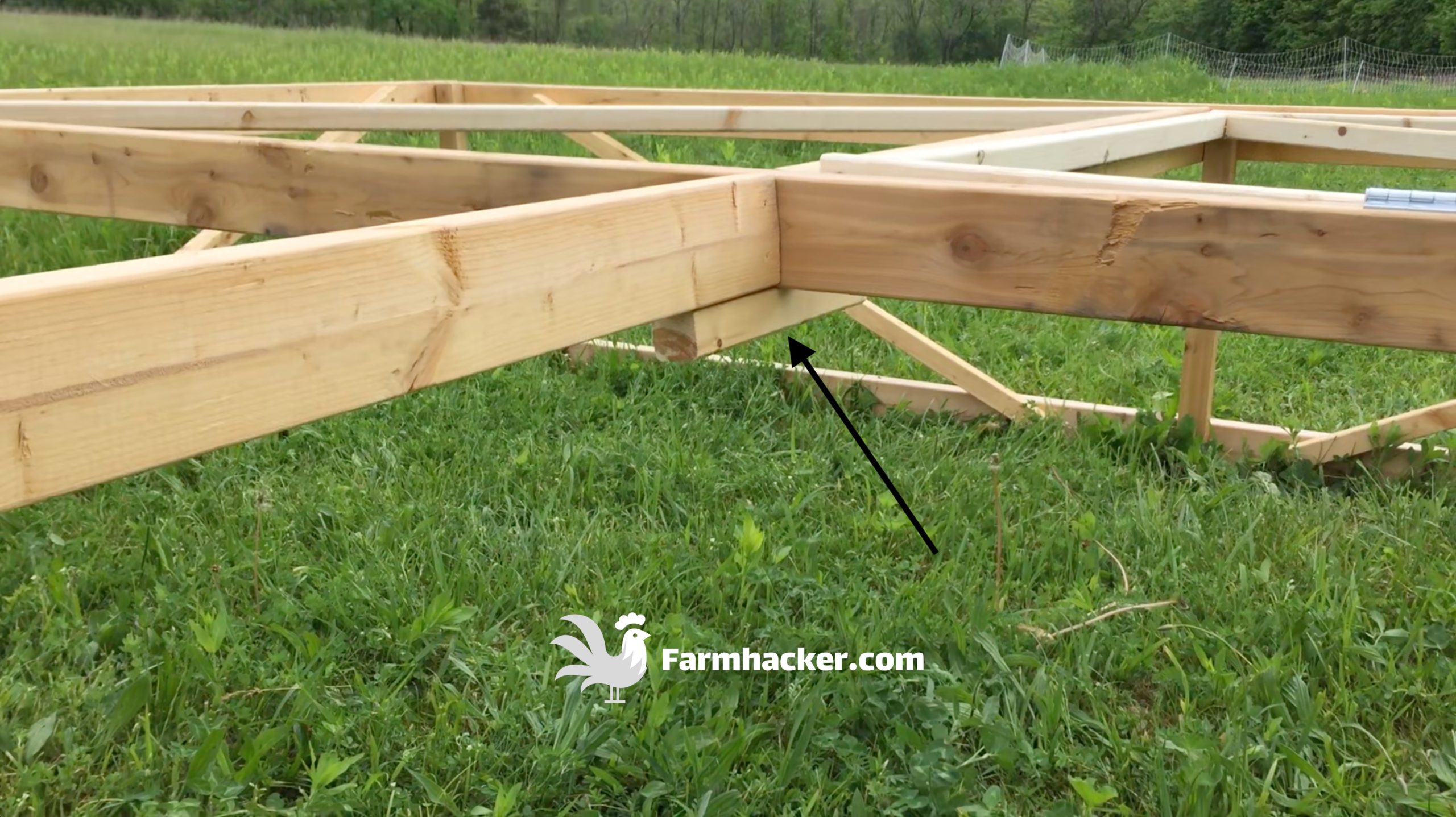
Then, I just took a short two-by-two and screwed it underneath the one that I cut to make it even stronger.

Next, I made cross bracing and put it up on each side. To do this, I took two-by-twos, screwed it into the top two-by-four and the bottom two-by-four, and did that on each side.
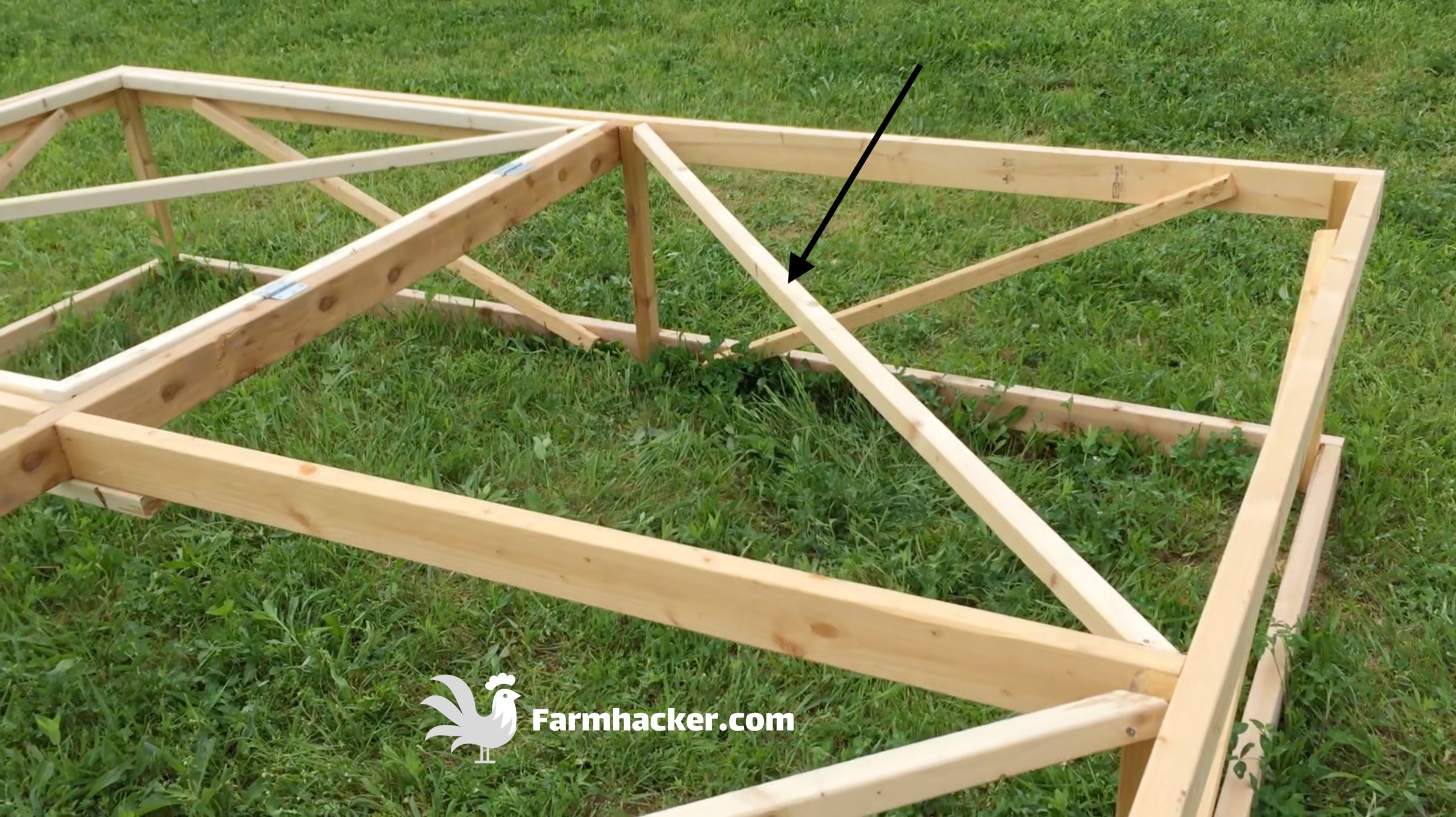
Finally, I took two-by-twos and I went across each square diagonally. I made it flush with the top so that it would be easy to wrap the chicken wire over the top of the chicken tractor.
Step 3: How to Create an Access Door

I created this door frame so I could gain access to my chickens whenever I need to. Basically, I created a frame out of two-by-twos and put a cross-bracing diagonally across it. I installed some hinges and I can lift the entire thing up when I need to open it.
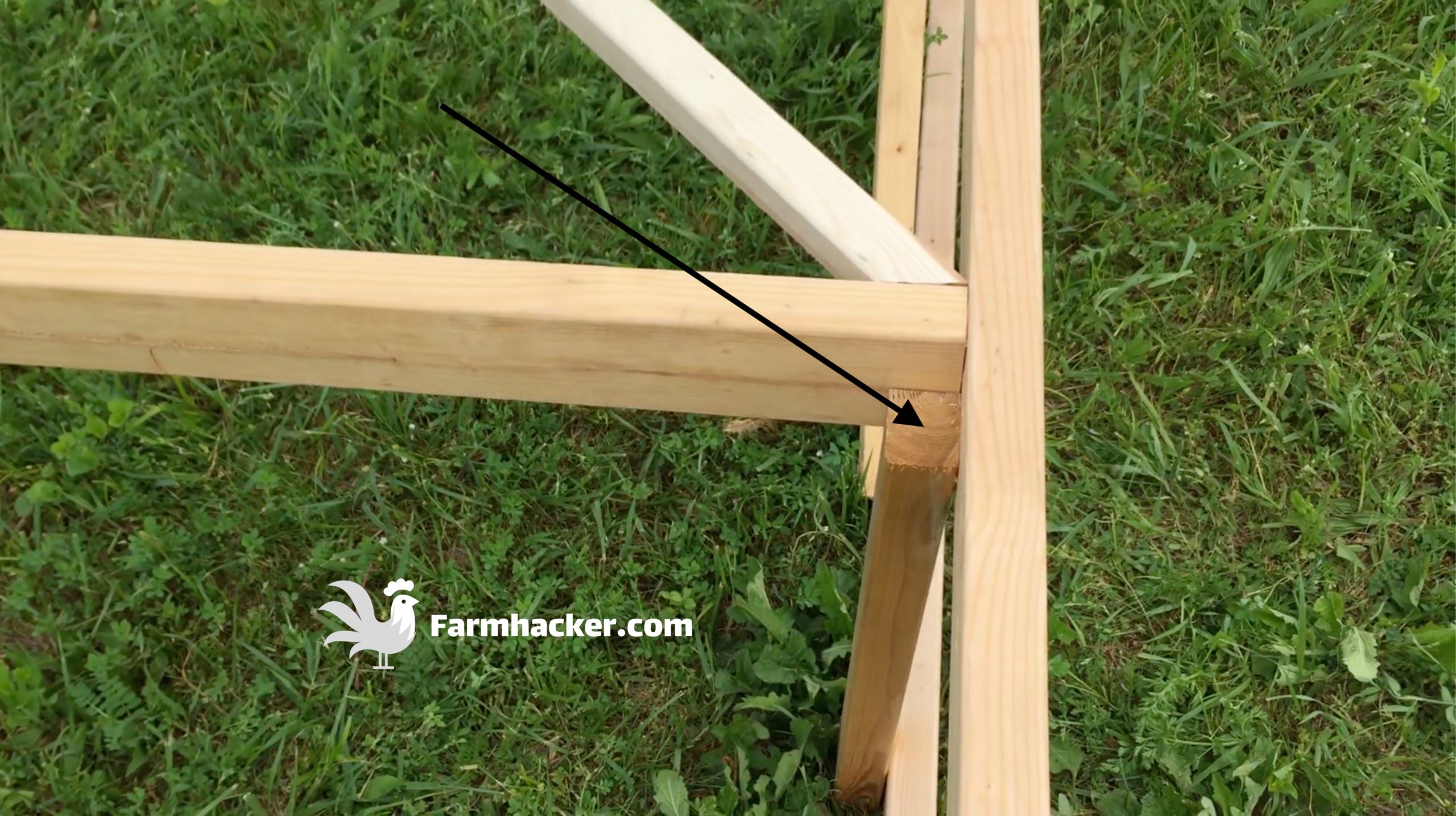
I cut these two-by-twos down a little lower in each corner so the door can rest right on the top of them.
Next, I’m going to wrap the whole thing and chicken wire, put a roof and sides on, and then I’ll show you what it looks like.
Step 4: How to Cover the Chicken Tractor
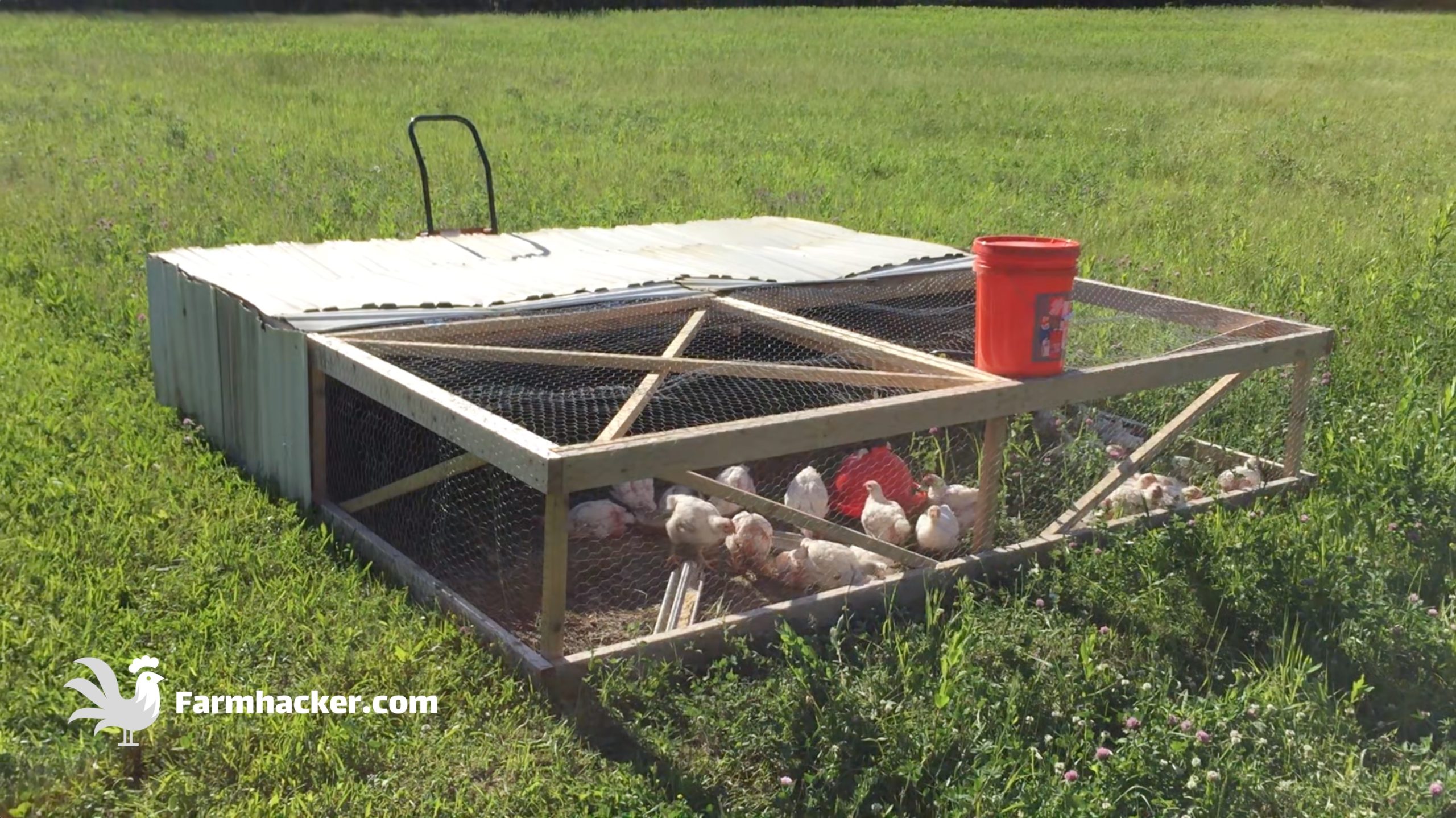
After the frame was completed, I wrapped the entire chicken tractor in chicken wire except for the bottom.

On the back half, I covered it with a roof and sides. I used some old mobile-home skirting for mine but you can use any type of roofing or siding material here that you wish. I just happen to have this laying around so I decided to upcycle it. It’s not the prettiest thing in the world but it gives the chickens a place to go to keep the rain, wind, and sun off of them which is very important.
If you do use a material like this, you can use tin snips to trim it down even though it is plastic. They seem to work the best besides using something like a reciprocating saw.
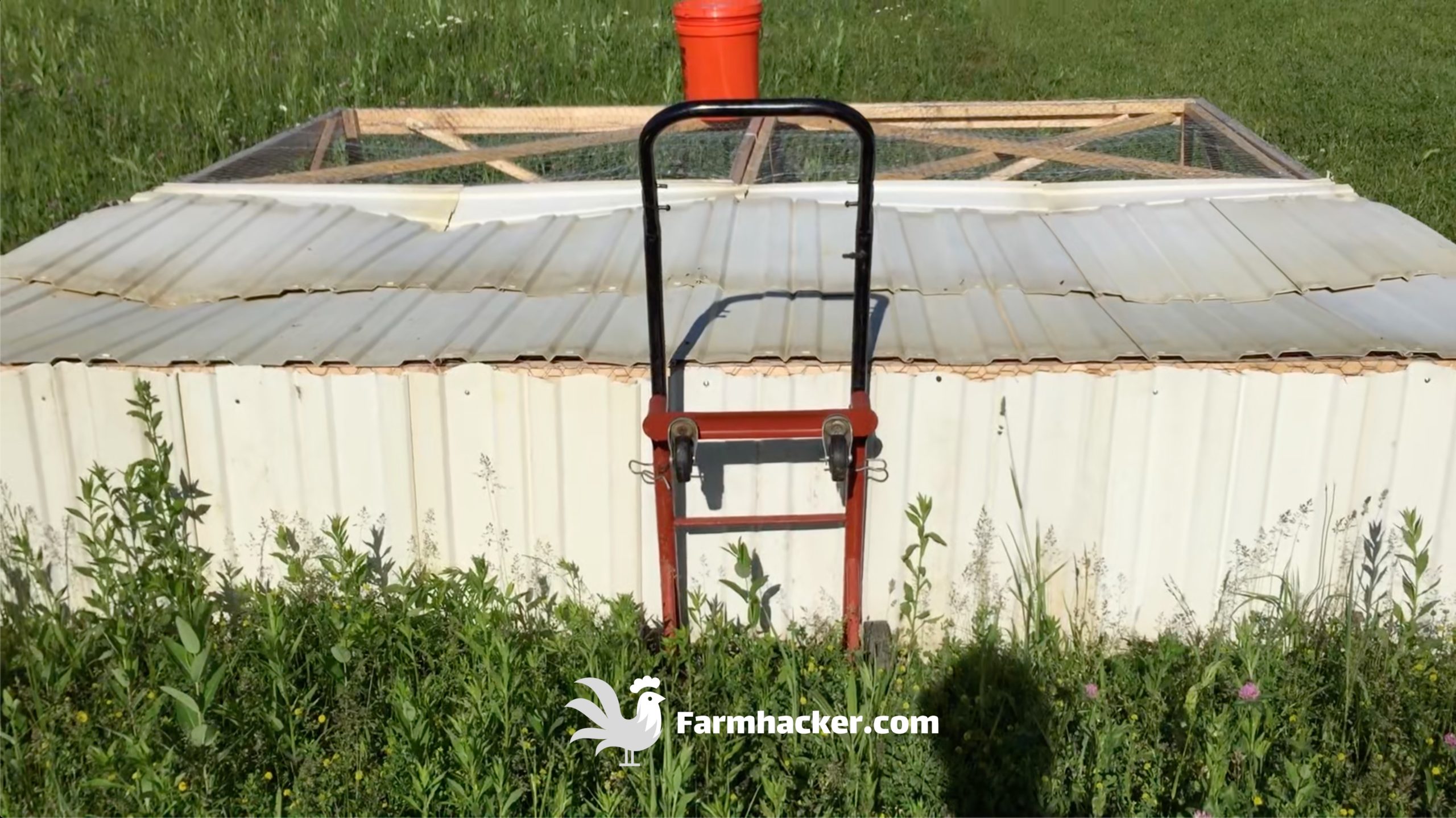
In the back I have a hand truck / dolly that I can use to to move the chicken tractor around. Whenever I’m ready to move it, I just pull down on the dolly, lift the back of the chicken tractor up off the ground, and pull it forward to their new spot. I do that about once every day or two depending on how much they’ve foraged and fertilized at there current spot.
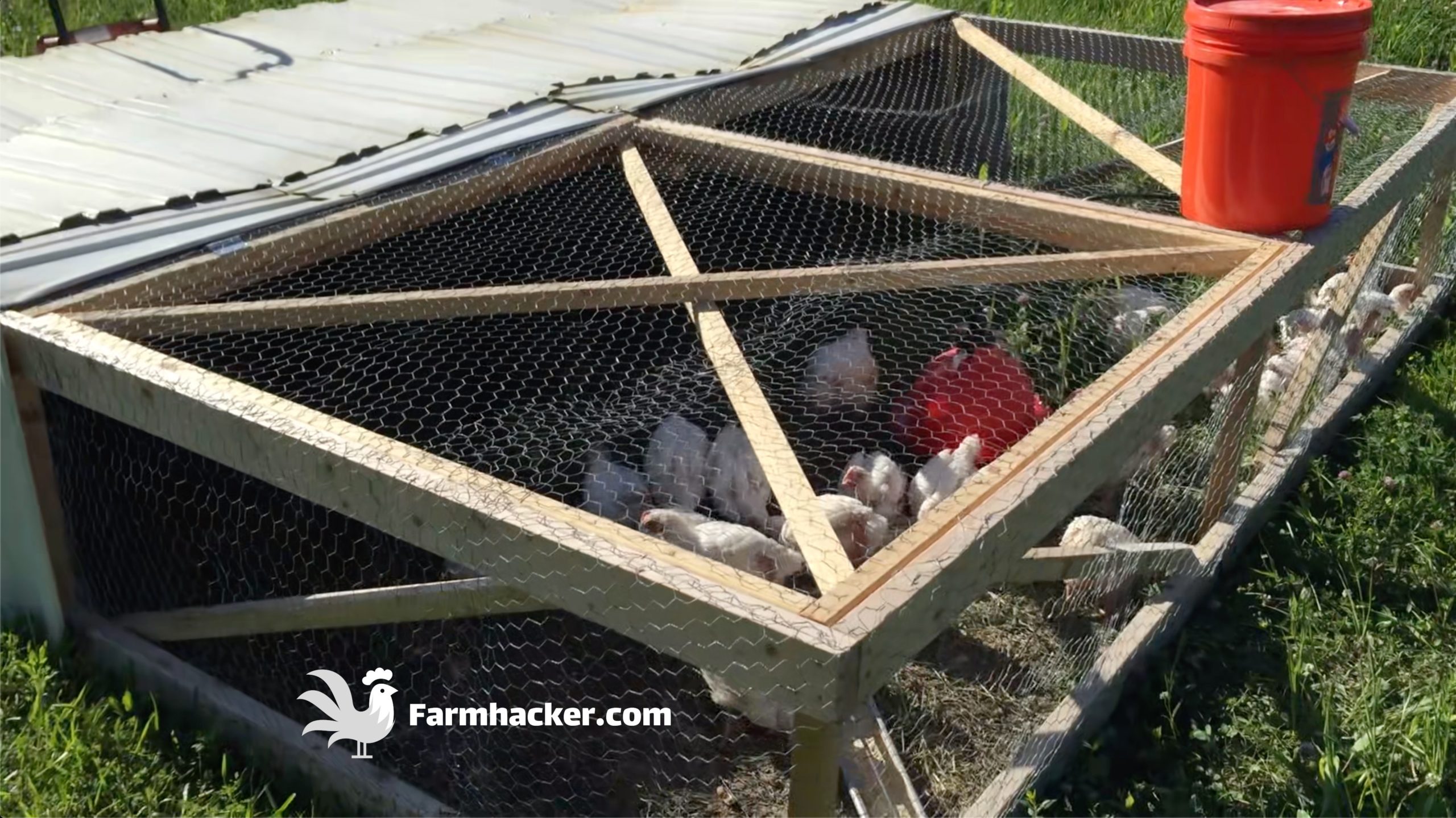
Here is my finished door. Whenever I need to get access to my chickens, I can just lift up on it.
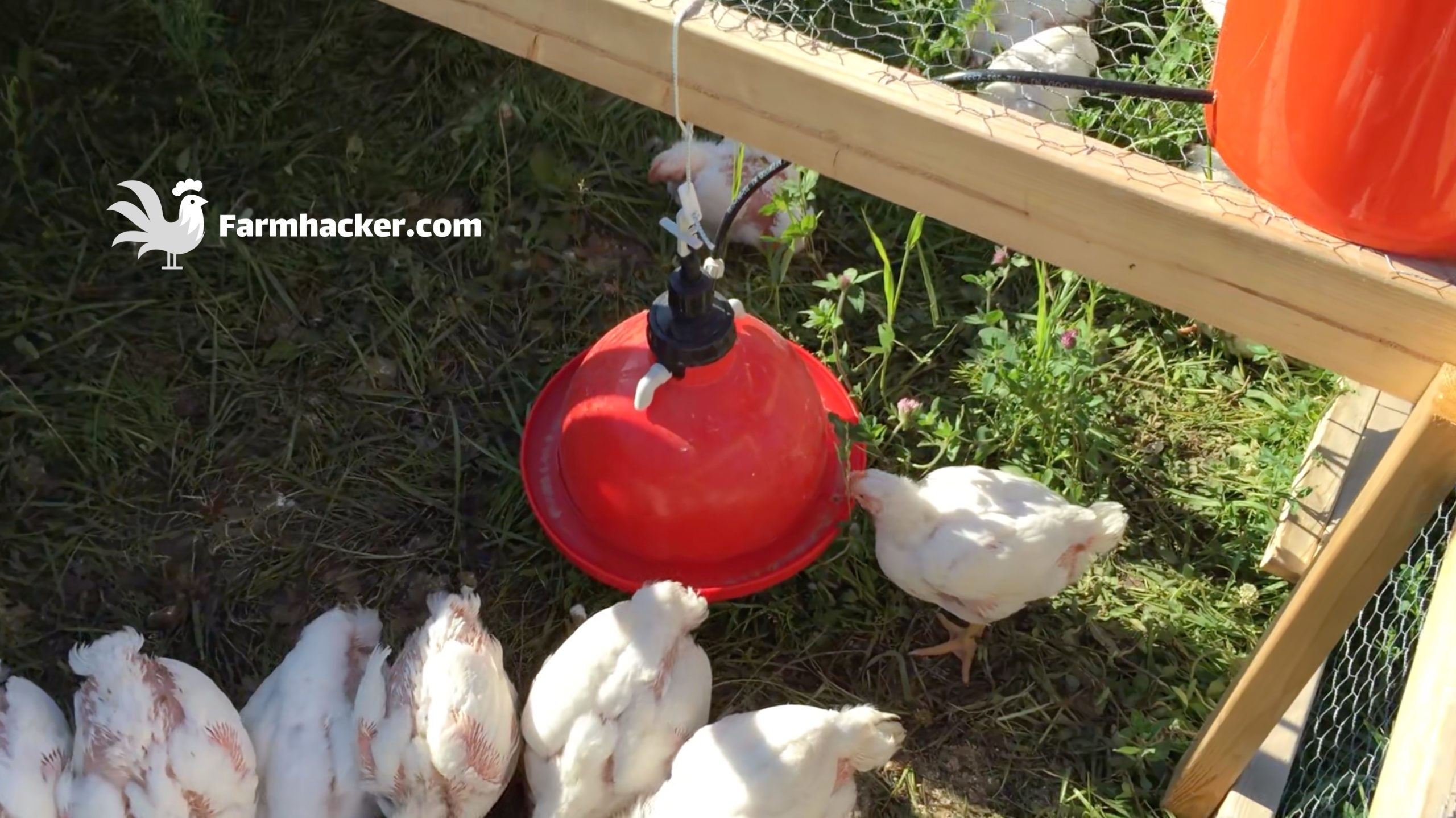
I installed a Plasson Broiler Drinker to provide water to the chickens. It’s a hanging drinker that’s controlled by gravity so, whenever it starts getting low on water, it’s auto-fed by the water that’s in a 5 gallon bucket. It’s really nice because it keeps the chickens out of the water since it hangs. You can also store a lot more water in the 5 gallon bucket than you can with a typical drinker.
If you want to learn more about Joel Salatin’s chicken operation, I highly recommend his book Pastured Poultry Profits.
So there you have it, this is the completed chicken tractor. As always, if you have any questions you can always reach out to me and I’ll try to help you out the best I can. Please comment below and let me know.
Video Instructions

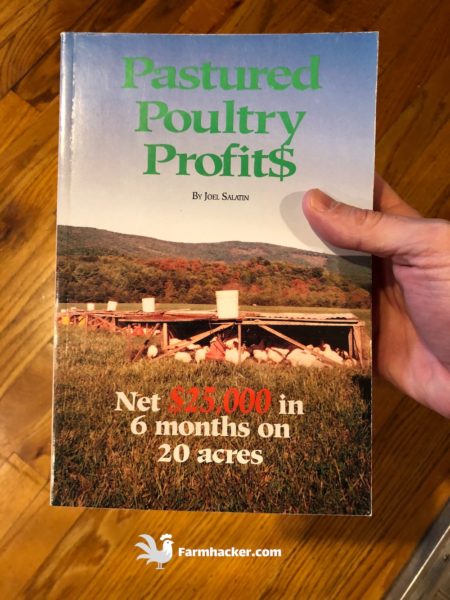
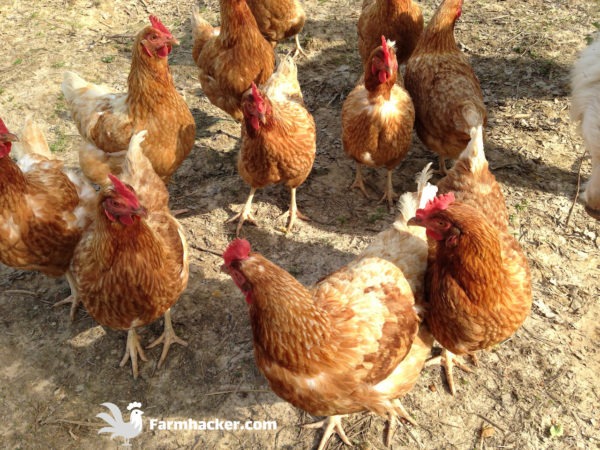
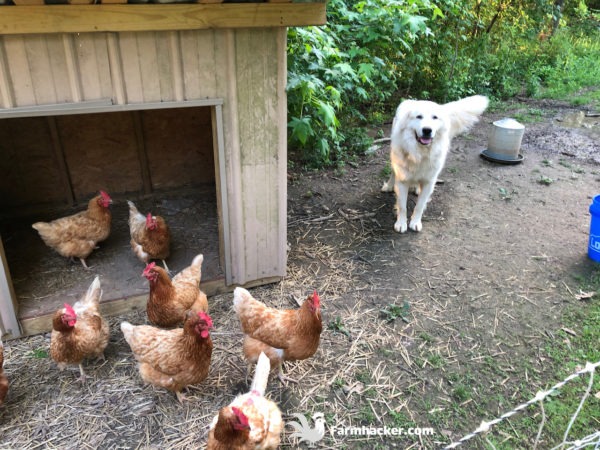

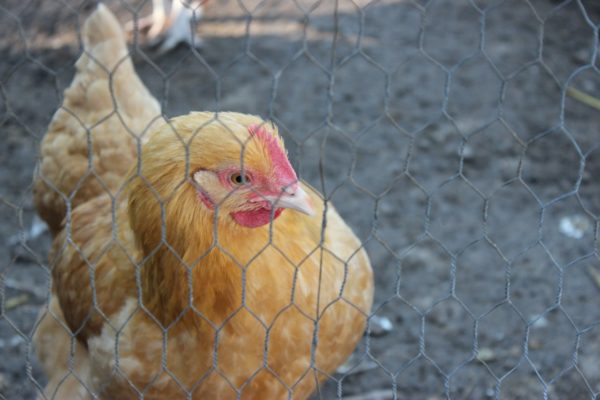

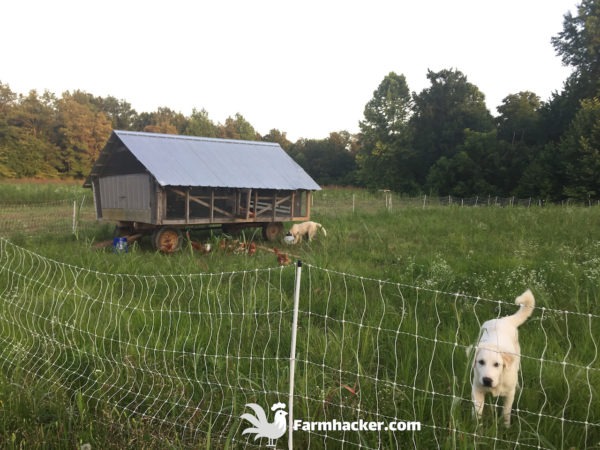


Awesome job. I am driven by instructions and measures so this is the best plan I’ve seen. Now I need to find one for the egg layers.
Really glad this was helpful to you!
I do have this article on a Joel Salatin style Eggmobile that you can use to get an idea on how to build one for egg layers. https://farmhacker.com/joel-salatin-style-eggmobile-mobile-chicken-coop/
Also, I have this article on the best chicken coops which includes some free plans that I’ve used before. https://farmhacker.com/best-chicken-coops/
I can’t find anywhere that says how long the corner braces are?
Hi Jennifer, are you asking how tall are the corner posts?
Yes, how tall are the corners? It looks like about 18″
It’s roughly 24″ tall.
How many chickens does this hold?
I don’t keep more than 25 in mine.
Can you post a picture of the dolly used to move the tractor please? Thanks!
Hi Rick, it is just a standard 2 wheel hand truck / dolly. I went ahead and put a link to one in the article that’s better than what I’m using in the pictures.
Thank you Mr. Casey. Do you recommend the pneumatic tired dolly in the link you provided?
Yes sir. Keep in mind, even with a hand truck it can still be difficult to move sometimes. It depends a lot on how flat your land is and how strong you are. Some people attach wheels to the side of their chicken tractors to make it easier. You may want to do that if moving it with a hand truck alone becomes too difficult.
I would seriously recommend hardware cloth or other wire that is smaller than standard chicken wire holes @ a min under 1″ ideally 1/2″. It prevents raccoons from reaching in and tearing heads off and,@ 1/2″ hardware cloth prevents most snakes of enough size to eat broilers chickens 3wk+.
Another thing if your in hot climate or raise thru summer heat. Put the side tin on with a hinge on the top edge to allow you to prop open or, not quite as good, use wing nuts to make it removable for better air flow. Broilers do not regulate body temp as well as other breeds layers/dual purpose. They tend to run hot.
One other small thing is raising total height from 24″ to 26″. Seems insignificant but using the suspended watering jugs it gives just a bit more room for hanging and adjustment that makes a noticeable difference to me.
Ideally IME having a door over the open wire top section as well as over the solid covered section is best. You really want your feeders under the protected solid roof from rain weather. To fill it is much easier from directly above.
Also IME suspended/hanging trough style feeders work best. They allow the most access area to feed. Hanging they do not need to be lifted out to move tractor. Even better fill with feed right before moving and the birds will gladly walk to stay with the feeder vs getting pinned at the rear of coop. I find the ones with the spinner reels on top are best as they prevent walking/roosting over the feed keeping it much cleaner.
Another nice tweak is giving the solid roof side a small pitch by raising the center/middle edge by the wire side up 2″. Simple as adding a second 2×2 there. This prevents waterfall where the edge meets the wire open side as it all drains off the outer edge.
Hey Tim! This is all really good advice. Thank you for taking the time to share this.
How long are the cross braces on the sides?
Hi Devin, I think they were roughly around 4 feet long. They don’t have to be exact. Just as long as they provide extra support from top to bottom.
How can we protect from digging predators?
Hi Jessica, I’ve never had an issue with digging predators with mine. If you were really concerned you could make the chicken wire along the sides longer so it covers the ground around the chicken tractor. That should keep predators from being able to dig next to the chicken tractor.
Do you have a supply list?
I may try this out!!!! Thanks so much! I hope all your links still work!
How often do you move the chicken tractor?
Hi JP!
It’s moved daily.